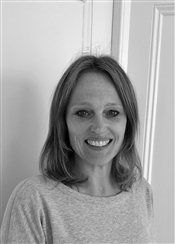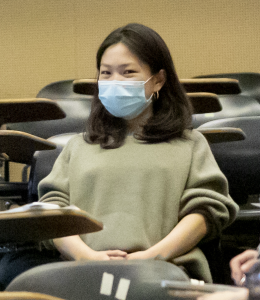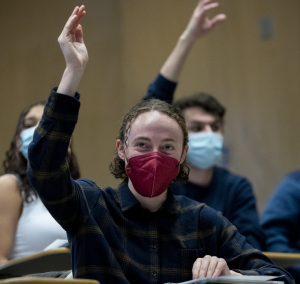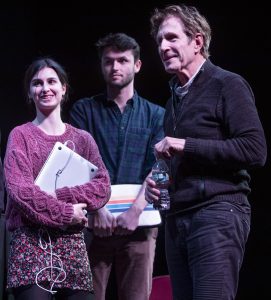By Nicky Meyerson (BFF 2019; Bates Class of 2020)
The Bates Film Festival (BFF) was a rewarding experience like none other. Whether through the process of watching and selecting our films for our lineup or organizing various events to push attendance, the Bates Film Festival was an incredibly unique experience that allowed for real, hands-on work and gave us, the students, the ability to understand what it takes to run such a significant event. Throughout this process, we were able to select films and create an atmosphere that would allow for the discussion of meaningful topics, many of which are problems facing our culture and society now. By centering the BFF on the theme of ‘equal justice,’ we, as festival coordinators, had the ability to foster an environment where important issues could be reviewed and examined in a safe and open space. Through films like Woman at War, Changing the Game, and Mahalia Melts in the Rain, the BFF allowed the Bates community to visually see various pervasive societal questions that ranged from questions about identity and heritage to more specific topics like environmental terrorism and competition with trans athletes. Film festivals provide a unique space for different communities to come together and engage in a meaningful dialogue that few other spaces are able to provide. Like a classroom here at Bates, festivals afford the opportunity for film viewers to directly respond to a question posed on the big screen, but in an atmosphere where they are surrounded by like-minded individuals who understand the influence that film can have on any given topic. In that sense, festival organizers have a duty to create an atmosphere that best fosters valuable discussion and allows for the free independent exchange of ideas that urges individuals to share their opinions about various issues facing our world today.
“Film festivals provide a unique space for different communities to come together and engage in a meaningful dialogue that few other spaces are able to provide.”

For as long as film festivals have been around, they have been exciting events for film lovers and filmmakers to gather and preview movies in a glamorous yet inviting atmosphere. From Sundance to Cannes, festivals have often started out as a way for smaller and less-well known directors and writers to preview their work to critics and audiences. This therefore created a very intimate setting between the filmmakers and their audiences by allowing these artists to open up and show their often vulnerable or personal work. Starting after the Second World War, film festivals started to develop an academic reputation by featuring important lecturers critiquing various works and providing context to them in terms of the greater society. In her explanation of how festivals started to take shape in this time period, Marijke de Valck says in her article “Film Festivals as Sites of Passage” that, “The screenings were organized in order to nurture an intellectual vanguard and more or less directly interfere in the film industry business by promoting alternative products and places of exhibition” (12). With follow-up conversations in various magazines and literary journals, festivals have provided an intellectual space to discuss this visual medium and the way that it influences our culture and how various artists directly deal with existing problems.
This particular environment also generates the ability for the film industry to address issues within its own community to set an example of how other sectors should follow. As the #MeToo movement started to build in late 2017 and early 2018, the film industry, in particular, was zeroed in on and hit with a seismic change that allowed for the entire business to address the underlying issues within the community. Issues such as sexual harassment, equal treatment of women, fair pay and labor practices including parental leave started to come to light and seriously be deliberated about in the industry. While this culture shift took place throughout the industry, film festivals in particular started to examine their business practices and became a focal point in addressing these systemic issues. Individuals like Harvey Weinstein, who started and built his careers with small independent films that were popular at festivals, and Sterling Van Wagenen, the co-founder of the Sundance Film Festival, were immediately ostracized from the entire film community and were subsequently without any power and influence. And while some have argued that the industry’s response could be more expedient, others have noted that there is already a visual change that has started to take place with meaningful reform. In a Deadline article published in January 2019, it was reported that Sundance saw a dramatic rise in the number of female directors at that year’s lineup. While that number still unfortunately remained lower than 50%, the data showed that the number of women who submitted films and the number of female directors featured at the festival nearly doubled from the previous years, with the #MeToo movement having an inevitable influence on this. “Props to the increase in numbers, but it still seems that the numbers are lower than they need to be–specifically for women and women of color. Baby steps, I guess,” Dino-Ray Ramos said in his article, “Sundance Increases Representation For Women & People of Color With Plenty Of Room For Improvement–Study” (8).

With our festival being created in the wake of this groundbreaking cultural shift, it was important that the BFF allowed for thorough discussion in a safe environment where individuals would be free to speak their mind without repercussions. I believe that we were successful in this goal. Though many of our directors were still White men, our decision that led to all of our films being chosen were made with identity and subsequent discussions in mind. We thought about the identities of the directors and writers and the characters portrayed as well as the important conversations that could be brought to life with each film. With Farming and The Feeling of Being Watched, we were able to have discussions about racial and ethnic bias and animus, a clear issue that surrounds us in today’s political climate. In The Last Black Man in San Francisco and Changing The Game, our discussions revolved around identity and purpose in the world and we were cognizant to have panels and guest speakers who reflected various perspectives and who had unique questions about their own individual identity.
Our goal at the beginning of the year, as stated in our mission statement, was to “work for equity and justice by welcoming a variety of viewpoints, seeking out partnerships with local communities, recognizing structural inequalities, and advocating for individuals from diverse backgrounds” (Bates Film Festival 2019 Mission Statement). By fostering a welcoming space and providing films that allowed for important conversation, the BFF was successful in our goals and true to our purpose. Through these films, our community was able to have conversations that often wouldn’t be discussed or even addressed in our day-to-day lives, even in our current academic setting.
“By fostering a welcoming space and providing films that allowed for important conversation, the BFF was successful in our goals and true to our purpose. Through these films, our community was able to have conversations that often wouldn’t be discussed or even addressed in our day-to-day lives, even in our current academic setting.”
The BFF was an incredible opportunity that I am fortunate to have experienced and I am forever grateful for the chance to be a part of this amazing experience that allowed for meaningful change and indispensable conversation to take place.
Works Cited
“2019 Bates Film Festival Mission Statement.” Bates Film Festival. Accessed March 19, 2021. https://course-wp.bates.edu/rhet391/mission/.
de Valck, Marijke. “Film Festivals: Successful or Safe?” In The Film Festival Reader. Edited by Dina Iordanova. 97-108. St. Andrews: St. Andres Film Studies, 2013.
Ramos, Dino-Ray. “Sundance Increases Representation For Women & People Of Color With Plenty Of Room For Improvement- Study.” Deadline, January 25, 2019. https://deadline.com/2019/01/sundance-usc-annenberg-inclusion-initiative-inclusion-representation-women-people-of-color-study-dr-stacey-l-smith-1202541174/






